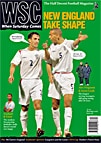 Alex Ferguson has achieved so much in his two decades at Old Trafford – but what happened to the club he left behind? Keith Davidson charts how Aberdeen were undone by Old Firm cash
Alex Ferguson has achieved so much in his two decades at Old Trafford – but what happened to the club he left behind? Keith Davidson charts how Aberdeen were undone by Old Firm cash
This month marks the 20th anniversary of Alex Ferguson’s move to Manchester United, so it’s a safe bet that newspapers and television will be full of glowing features, plus the odd dour analysis of whether he has outstayed his welcome. Few will dwell on the club that Fergie left behind, or what has happened to it over the last couple of decades, but the subsequent fate of Aberdeen does chime in with wider changes in Scottish football.
The story may have worn smooth with the telling, but until Fergie’s appointment in 1978 Aberdeen had been a provincial club with only a few successes to boast. He galvanised a group of fine players to win trophy after trophy between 1980 and 1986. Naively, this was seen as part of a wider revolution in Scottish football, where the habitual Glasgow power base was usurped by a pair of east-coast upstarts dubbed the New Firm: Aberdeen and Dundee United. Both were packed with homegrown talent, both were managed by career curmudgeons (Jim McLean in United’s case).
It was easy to get caught up in the hype then, but with hindsight it’s plain that Pittodrie and Tannadice were heralding nothing much. Instead, this was the last hurrah of a Scottish football tradition with authoritarian managers and native players who grew up when “jumpers for goalposts” was a truism rather than a catchphrase.
Clubs were still old-fashioned institutions with a gloss of middlebrow professionalism rather than Thatcher-era businesses and foreign players were a novelty. Then, Rangers changed the rules. Businessman David Murray gained control of the Glasgow club in 1988, just a couple of years after Graeme Souness had been enticed to Ibrox. With Ferguson gone, it was his successors who had to cope as the financial gap between Rangers and the rest – then including Celtic – widened at a rate of knots.
If anyone wonders why there is such a poisonous rivalry between Aberdeen and Rangers fans, this period holds the key. The Dons lost out to the Glasgow side in three League Cup finals and one Scottish Cup final, and were league runners-up behind Rangers five times – all between 1988 and 1993. While Fergie was celebrating his second English title in 1994, Aberdeen were coming to terms with the status of perennial second-placers. Then it got much, much worse.
At that point, club legend Willie Miller (captain of the Ferguson team that defeated Real Madrid in the 1983 European Cup-Winners Cup final) had more than two years under his belt as manager, some older players were cleared out and there was a glimmer of hope that the new season could bring one last big push for success. Instead everything fell apart. League form was abysmal, Miller was gone by early 1995 and the club avoided relegation by the skin of its teeth under new boss Roy Aitken (yes, the grim-faced bloke who used to sit next to David O’Leary).
Aitken did land the League Cup in 1996, but performances on the park deteriorated again and he was sacked towards the end of 1997. By now the club were in debt, having spent £4.5 million on a new stand, while Aitken and his successor, the universally unpopular Alex Miller (yes, the grim-faced bloke who sits next to Rafa Benítez), didn’t help the bank balance by splashing the cash on a series of duds. Miller lasted only a year and Aberdeen developed a reputation as the comic turn of Scottish football, with a managerial swing door and unhappy fans.
To make matters still worse, there was the arrival of another millionaire businessman in Glasgow in 1994: Fergus McCann. In five years he turned Celtic from a financial basket case into a team that could compete on and off the park with Rangers. Soon the best anyone else could hope for was third in the league – the real New Firm (the Old Firm with added business acumen) had it all sewn up. The Dandy Dons were not alone in having problems then. With wage inflation rife, stadium improvements to put into place, the Old Firm to pursue and TV income commensurate with a population of five million, Hibs were in the red, Hearts were busy running up even larger debts (studiously ignored, even now) and the budgetary adventures of Dundee, Livingston and Motherwell have seen all three slide into administration in recent years.
Rather than just give up, a new financial realism has stumbled into life almost everywhere, put into effect at Pittodrie by another three managers since 1999. The benefit has been a focus on youth; the downside is that any Scottish team showing real promise is eviscerated before you can say “transfer fee” (especially Hibs over the last 18 months).
Where Fergie could realistically aim for Scottish titles and European runs more than 20 years ago, if he was at Aberdeen today he’d have to content himself with much, much less – either that or find a Lithuanian entrepreneur with magic overdraft facilities.
From WSC 238 December 2006. What was happening this month